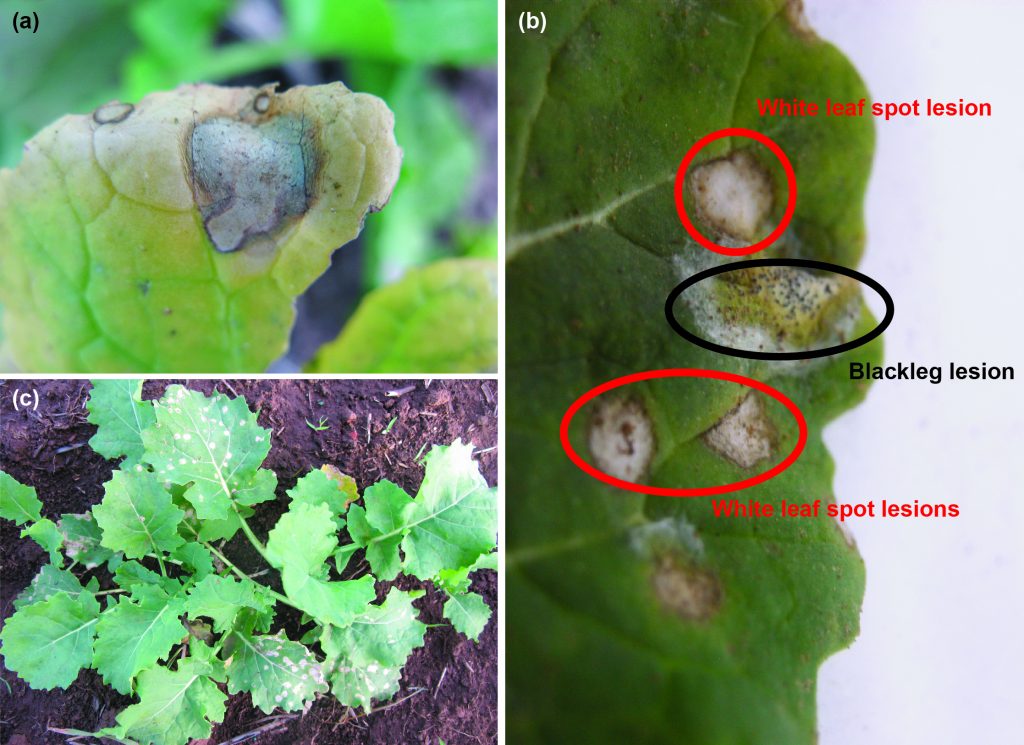White leaf spot is caused by the fungus Mycosphaerella capsellae (also called Pseudocercosporella capsellae). The disease has a worldwide distribution and a wide host range among cruciferous weeds. In Australia, white leaf spot commonly infects canola seedlings. It is not usually severe enough to cause yield loss.
What to look for
Leaf and stem lesions are greyish-white to light brown. Unlike blackleg lesions, white leaf spot lesions do not contain pycnidial fruiting bodies (black dots) and usually have a more granular surface compared with the smooth surface of blackleg lesions. Leaf lesions often have a brown margin when they mature; they can be up to one centimetre in diameter and often join to form large irregular shaped lesions. Nutrient deficient crops have been reported to be more severely affected by the disease. In severe epidemics, infections can cause leaf death and defoliate plants.

White leaf spot infection on canola leaves. (a) Typical off-white coloured lesion. (b) Typical white leaf spot lesion (red circles) and blackleg leaf lesions (black circle). Note the white leaf spot have no small black spots (fruiting bodies). (c) Mildly severe white leaf spot infection. Photos: S. Marcroft
Disease Cycle
The fungus survives on canola stubble as thick-walled mycelium. When prolonged wet weather conditions prevail autumn/winter wind-borne spores are produced that cause primary leaf lesions on canola. These initial lesions go on to produce new wind-borne spores that cause the rapid spread of the disease throughout the crop. The disease is not usually seed-borne but can be spread by infected seeds or infected debris with the seed.
Management
- White leaf spot infection is not usually severe enough to warrant control. In severe situations, fungicides applications can be applied. However, yield responses are unknown.
- Crop rotation and isolation from the previous year’s canola stubble will reduce infection from windborne spores.
- Control cruciferous weeds and volunteer canola.
- Provide adequate nutrition to reduce crop stress.
- Pydiflumetofen foliar fungicide is registered for White leaf spot control. Foliar fungicide applications for early blackleg control will also provide control against White leaf spot.
Please note: This book is also available on AppleBooks


